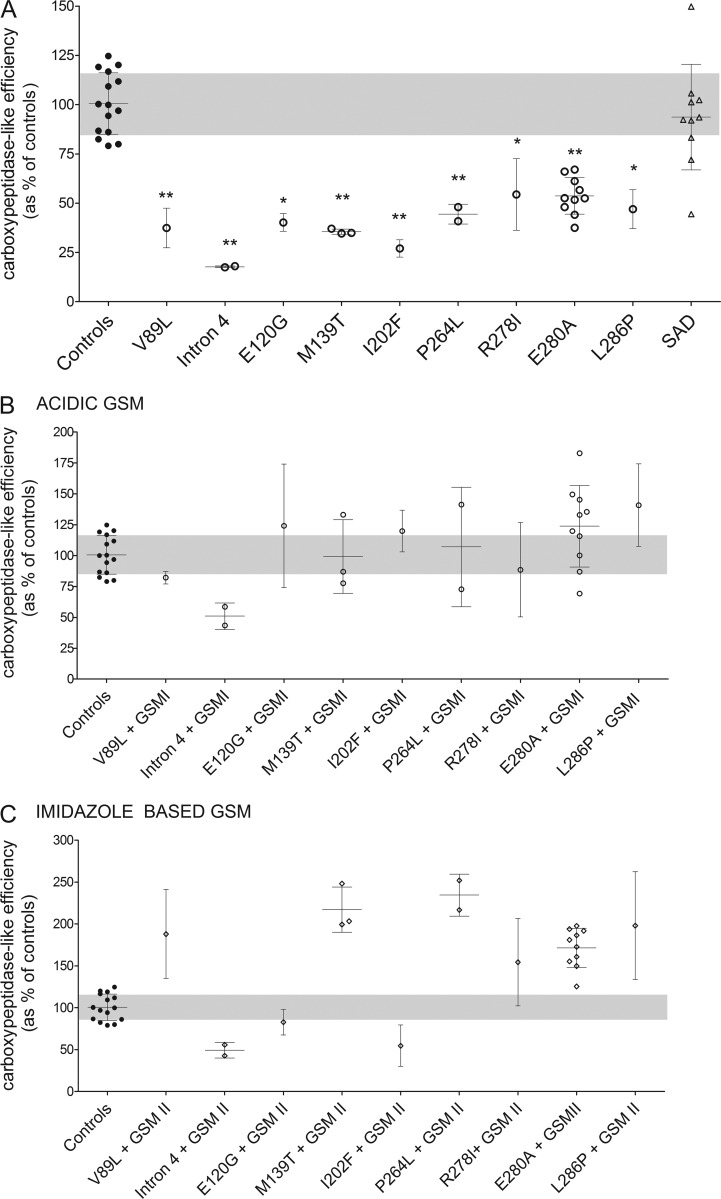Figure 2.
AD-causing PSEN1 mutants impair γ-cleavage efficiency in FAD human brain samples, and GSMs correct for the pathogenic effect. (A) Carboxypeptidase-like efficiency seen as Aβ38/Aβ42 (product/substrate) ratio. (B and C) The responses to GSMs observed in mutation carrier brain samples is contrasted with the carboxypeptidase-like efficiencies measured in brain samples from nondemented subjects (gray area, shown in panel A). To determine the response to GSMs, CHAPSO-resistant membranes prepared from brain tissue of patients were incubated with 1.5 µM C99-3×FLAG substrate in the presence of 1 µM GSM. Graphs show mean ± SD for groups with one case or mean of means ± SD for groups with number of cases greater than one. All experiments were repeated three to five times, and statistical significance was tested with one-way ANOVA and Dunnett's post test, taking the corresponding WT set as the control group (**, P < 0.01; *, P < 0.05).

